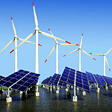- Home >
- Our Actions >
- Ambassador report
1
Comments
The World's Most Contaminated Region-East Asia |
|---|
|
Nice to meet you fellow ambassadors! This is my first ever ambassador report and I will be reporting about East Asia from now on :-)
East Asia, as you can infer from its name, is the name for the eastern region of Asia. Its main 3 countries are China, Korea, and Japan, and it was one of the cradles of the four early civilizations in ancient history. Due to rapid industrialization in the recent decades East Asia has been able to achieve great economical growth. However, while East Asia's development was accelerating, a hidden problem also began to grow. And that problem finally burst out, appearing before our eyes in the shape of 'environmental pollution'.
Currently many references are proving that East Asia is the most polluted region in the world. According to the Max Planck Chemistry Laboratory in Germany, the most contaminated region in the world is East Asia, and this contamination is expected to rise until 2050. What is more, East Asia is not suffering from just one or two environmental pollutants. As you can see from the data with the four maps down there which is from the Japanese National Institute for Environmental Studies, East Asia is the main setting of pollutions from yellow sand(yellow), aerosols(red), man-made particulates(green), and ozone(blue).
Moreover experts are predicting that East Asia will account for 47% of the world's total sales of air pollution control equipment and consumables along with air purification equipment for buildings and plant ventilating systems by 2013. If so, why is East Asia suffering from extreme environmental contamination? Well, there are some historical matters why East Asia's pollution is inevitable. Thousands of years ago, when the early ancient civilizations were developing, East Asia was the most scientifically and technically developed region. China developed the world's first paper, compass, and gunpowder. It was also able to construct massive structures like the Great Wall of China and the Great Canal during the Sui Dynasty. The world's most oldest presswork is the Dharani Scroll, and the world's oldest extant book printed with movable metal typefirst is the Jik Ji, and these are all the works of Korea. Like this, East Asia was leading the world in terms of science and industrialization. However since the late Medieval Ages and the Renaissance, the Western world began to embrace oriental culture and started to surpass East Asia's technology levels. With the Industrial Revolution and Imperialism, European powers began colonizing eastern nations, and the technical standards of East Asia was suppressed. However since World War 2 ended, the world is now going towards globalization, and East Asia is recovering from its colonized periods and regaining its past dynamics. Thus East Asian ex-colonies have achieved dramatic economic growth in a very short period of time. Korea developed from one of the world's poorest countries to a member of the OECD in just 30 years, and China is currently one of the hottest economies in the world, ranking second in terms of GDPs by surpassing Japan. However, under the richness and prosperity of economic development lay the dark side of industrialization: extreme contamination of the environment. Because the economic development of East Asian countries was so rapid, the harm done was also uncomparably enormous. And this led to the current status quo of East Asia: the most dynamic industrial place in the world but also the most 'dirtiest' place at the same time. However not many people in the world know about this. Therefore as the official ambassador of Tunza-Ecogeneration, I plan to report on East Asia's environmental issues from now on in order to raise public awareness of the region. |
|
|











 Previous : What is the key to saving the ...
Previous : What is the key to saving the ...









1 Comments
Many Congratulations Yeon Seop!
This is an exellent article. Great work~~
Posted 24-09-2012 12:58